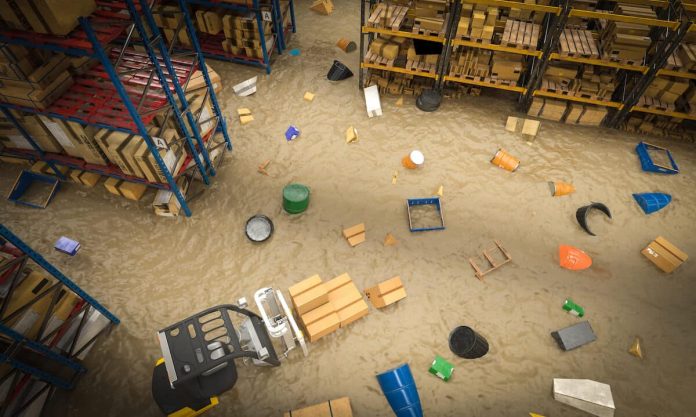Many people find themselves in flooded warehouse situations, and it’s not always easy to know how to deal with them. The situation can result in many problems, including the potential for mold, structural damage, and the loss of valuables. It is important to understand what can happen and how to react properly when in a flooded warehouse. This article will outline what happens when a warehouse is flooded and some of the best options for dealing with it.
A flood can be caused by many factors, including a broken pipe and heavy rainfall. Sometimes these situations are beyond repair, but steps still need to be taken before too much damage has been done. Depending on the amount of water that has entered your warehouse, you may be able to deal with it yourself or call professionals for help. The following blog post will discuss how to handle a flooded warehouse situation.
Turn Off Utilities
Three critical utilities need to be shut off before taking any other step. These are the electrical power, water, and HVAC systems. If these systems quit, they leave you in a dangerous situation that can cause serious property damage. Shutting down electrical power will help prevent electrocution or electrical fires from damaging the rest of your warehouse.
Shutting down the HVAC system will prevent it from creating hot and cold spots on your property. Water shut-off is crucial because you need to stop the water flow in your warehouse. If this water isn’t shut off, it can cause serious property damage when entering the water itself.
Contact Your Insurance Provider
Your insurance provider may be able to come over in less than 24 hours and begin a water damage assessment. This will help you with the claim process, which is also very important for your insurance. Because of the many factors that can cause a flood, it is important to have as much documentation as possible.
Documenting every aspect of this flood will provide evidence in case your insurance company estimates the water damage. Open communication with your insurance company is essential because they will want a thorough accounting of the flooding event.
Flooding can worsen already damaged property, which may require more extensive restoration efforts. If you are confronted with a water damage claim or loss, you’ll need to prepare for it.
Call a Restoration Contractor
Many restoration contractors can handle flooding and can get the job done quickly. A full restoration of your warehouse can require different stages to be completed in order to have a proper assessment.
Your preference may depend on the extent of the damage and the time you will have to take off from work. Warehouse water damage cleanup is a difficult process and can be time-consuming. Calling a restoration company can help you get back to work in the shortest amount of time possible.
Salvage What You Can
In some cases, you may be able to salvage some valuables before all the water has leaked out of your warehouse. If you’re lucky enough to have valuables in your warehouse, you may want to secure them. At a minimum, this can protect the valuables from damage, and at a maximum, you may be able to sell them afterward.
Clearing out some of these items will also ease the restoration process. Be sure to relocate your salvaged items to a safe location and make sure that you document their current condition. You may have to provide this documentation to your insurance provider for reimbursement or appraisal purposes.
Remove Water
The next thing you’ll want to do is remove the water from your property as quickly as possible. If you don’t remove the water, mold may begin to grow, which can cause serious health issues.
Ensure all the water has been removed before allowing people into your warehouse after it has been flooded. Contractors can assist in removing this water by pumping it out with portable pumps until all of the water has been removed.
Dehumidify
The next step is to dehumidify the area, and this can be done through several methods. First, you can use fans to assist in drying out the air, but you may also want to use portable dehumidifiers. These machines will help remove more water quickly while regulating your warehouse moisture.
Contents Restoration
The next step is to replace all of the contents in the warehouse with dry materials. This will include replacing any items damaged by mold or water. You may also decide to move some of the contents out of your warehouse to prevent further damage.
Conclusion
A flood is very serious. However, you can take several steps to limit the damage and help prevent further property damage. It is important to prepare for any potential flood situation in your warehouse before it happens. This will allow you to get back to work as soon as possible without losing sales or revenue from a prolonged downtime.






